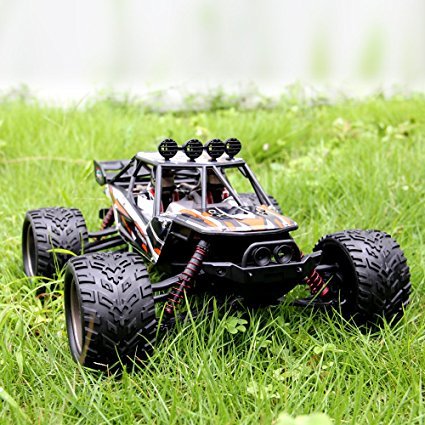As we step into 2025, advanced systems technology is reshaping the way industries operate. From AI to robotics, and IoT to blockchain, these technologies are not just buzzwords. They’re changing how we work, live, and interact. This article dives into how these advancements are setting new standards across various sectors, making them more efficient, sustainable, and innovative. Let’s explore how these tech trends are paving the way for the future.
Key Takeaways
- Generative AI is making business operations more creative and personalized, while also simplifying complex tasks.
- Advanced robotics are bringing precision to manufacturing, enhancing healthcare, and improving daily life with personal aid.
- IoT is turning cities into smarter, more efficient places with better traffic management and energy use.
- Blockchain is moving beyond just cryptocurrency, offering secure solutions for supply chains and voting systems.
- AI in biotechnology is speeding up medical diagnostics and advancing agricultural practices.
Generative AI: Revolutionizing Business Operations
Enhancing Creativity and Personalization
Generative AI is reshaping how businesses approach creativity and personalization. With its ability to generate content, designs, and even music, companies can offer unique and tailored experiences to their customers. Imagine AI crafting a personalized marketing campaign that speaks directly to individual preferences. This level of customization not only boosts customer satisfaction but also drives brand loyalty.
Streamlining Complex Processes
Incorporating industrial AI into business operations is transforming complex processes into streamlined workflows. Generative AI can automate routine tasks, allowing employees to focus on more strategic initiatives. For instance, in software development, AI can write code snippets, reducing the time developers spend on mundane tasks and increasing overall productivity.
Improving Customer Interactions
Generative AI is also enhancing customer interactions by providing more responsive and intelligent support. AI-powered chatbots can handle inquiries with ease, offering real-time assistance and solving problems efficiently. This not only improves customer satisfaction but also reduces the workload on human support teams, allowing them to tackle more complex issues.
As businesses continue to integrate generative AI, they are not only optimizing operations but also setting new standards for innovation and efficiency in customer engagement.
Advanced Robotics: The New Era of Automation

Transforming Manufacturing with Precision
In 2025, advanced robotics is reshaping manufacturing with precision and efficiency. Robotics systems are now capable of handling intricate tasks, adapting in real-time to changing conditions. This means production lines are becoming more flexible and efficient, reducing waste and increasing output. Robots are not just tools; they’re partners in production, optimizing every step of the process.
- Real-time adaptation to changes
- Increased production efficiency
- Reduction in material waste
Revolutionizing Healthcare with Surgical Robots
The healthcare sector is experiencing a revolution with the advent of surgical robots. These machines enhance the precision and effectiveness of medical procedures, minimizing human error and improving patient outcomes. Surgeons now have robotic assistants that can perform delicate operations with unmatched accuracy, providing better recovery rates and less invasive procedures.
In operating rooms across the globe, surgical robots are becoming indispensable, transforming how surgeries are planned and executed.
Enhancing Daily Life with Personal Aid Robots
Personal aid robots are becoming more sophisticated, offering support for daily tasks and care assistance. These robots are designed to help with everything from household chores to providing companionship and care for the elderly. As they become more common, these robots are expected to significantly improve the quality of life for many individuals, making everyday tasks easier and more manageable.
- Assistance with household chores
- Companionship and care for the elderly
- Improved quality of life for users
The integration of AI in smart automation is driving these advancements, showcasing the transformative power of robotics in our daily lives and industries.
Internet of Things: Building Smarter Cities
Optimizing Urban Traffic Management
In today’s bustling cities, traffic congestion is a common headache. IoT technology is stepping up to tackle this challenge head-on. By integrating sensors and smart traffic lights, cities can monitor traffic flow in real-time. This helps in adjusting signal timings automatically to reduce congestion. Imagine a world where your morning commute is smoother and less stressful. With IoT, this is becoming a reality.
- Real-time data collection from road sensors
- Smart traffic lights adapting to current conditions
- Reduced travel times and improved fuel efficiency
The future of urban mobility is not just about moving people from point A to B but doing so efficiently and sustainably.
Enhancing Energy Efficiency
Energy consumption in cities is skyrocketing, but IoT solutions are paving the way for more efficient use. Smart grids and connected devices allow for better energy distribution and usage tracking. This means less energy waste and lower bills for residents. It’s like having a smart assistant for your city’s power needs.
- Smart meters providing detailed energy usage data
- Automated systems adjusting energy distribution
- Lower energy costs and reduced carbon footprint
Improving Public Services
Public services are the backbone of any city, and IoT is enhancing how these services are delivered. From waste management to emergency services, smart technologies are making cities more responsive. IoT devices can alert city workers to overflowing trash bins or help emergency services arrive faster by providing optimal routes.
- Sensors monitoring public infrastructure
- Improved response times for city services
- Enhanced quality of life for residents
Incorporating IoT into city planning not only improves efficiency but also makes urban life more pleasant for everyone. It’s about creating environments where technology and community thrive together. For more insights on how digital innovation is reshaping industries, check out IntelligentHQ’s insights.
Blockchain Beyond Cryptocurrency: A New Frontier
Securing Supply Chains
Blockchain tech is making waves beyond just crypto. In supply chains, it’s a game-changer. Transparency and traceability are now possible like never before. Companies can track products from start to finish, ensuring quality and authenticity. This means fewer counterfeits and more trust. Imagine knowing the exact path your coffee took from farm to cup. That’s the power of blockchain in supply chains. It’s not just about tracking; it’s about building confidence and reducing fraud.
- Real-time tracking of goods
- Reduced fraud and counterfeiting
- Enhanced transparency and trust
Revolutionizing Voting Systems
Voting is crucial, right? Blockchain is stepping in to make it more secure and transparent. With blockchain, every vote is recorded in a way that can’t be changed. This means more trust in the system. No more worries about tampering or fraud. Plus, it’s accessible. People can vote from anywhere, making it easier to participate. This tech is paving the way for a more democratic future.
Enhancing Healthcare Record Management
Healthcare is tricky with all those records. Blockchain can help by making record management more secure and efficient. Imagine having all your medical history in one place, accessible only to those you trust. Blockchain ensures that your data is safe and private. It’s not just about security; it’s about giving patients control over their information. This tech is set to transform how we handle healthcare records.
Blockchain technology is not just a buzzword; it’s a real solution to real problems. From securing supply chains to revolutionizing voting and healthcare, it’s reshaping industries and building trust where it’s needed most.
AI in Biotechnology: Pioneering Health and Agriculture
Accelerating Medical Diagnostics
In the world of healthcare, AI is making waves by speeding up medical diagnostics. Traditional methods can be slow, but AI tools are changing that. They analyze complex data quickly, helping doctors detect diseases like cancer much faster. This speed is crucial for early treatment, potentially saving lives. AI systems learn from vast amounts of medical data, improving their accuracy over time. This means fewer misdiagnoses and better patient outcomes. As AI continues to evolve, we can expect even more breakthroughs in how we diagnose and treat illnesses.
Advancing Smart Crop Breeding
Agriculture is seeing a transformation, thanks to AI’s role in smart crop breeding. Farmers are now using AI to analyze soil conditions, weather patterns, and crop health. This data helps in breeding crops that are more resilient to climate change and pests. AI-driven models predict the best traits for new crop varieties, ensuring higher yields and better quality. The integration of biotechnology with AI is paving the way for sustainable farming practices, reducing the reliance on harmful pesticides and fertilizers.
Improving Global Health Solutions
AI’s influence isn’t limited to diagnostics and agriculture; it’s also reshaping global health solutions. By analyzing global health data, AI identifies trends and outbreaks faster than ever before. This allows for quicker responses to health crises, potentially preventing pandemics. AI also plays a role in developing new drugs, speeding up the research process and reducing costs. As we look to the future, AI’s potential to improve global health is immense, offering hope for a healthier world.
Digital Twins: Transforming Agricultural Practices
Simulating Real-World Conditions
Digital twins are like virtual replicas of real-world systems. They allow farmers and researchers to simulate and predict outcomes without physically testing them. This tech is super handy in agriculture, where conditions like soil types and weather can be tricky to manage. By using digital twins, farmers can test different scenarios, which saves both time and money in field trials. It’s like having a crystal ball for your crops.
Enhancing Precision in Field Trials
Field trials are essential for testing new crops and farming techniques, but they can be costly and time-consuming. Digital twins change the game by allowing these trials to happen virtually. They offer a way to tweak variables like water usage or fertilizer application without touching the soil. This makes the trials more precise and less risky. Plus, it opens up new possibilities for innovation in farming practices.
Supporting Sustainable Practices
With the world focusing more on sustainability, digital twins offer a way to measure the impact of farming on the environment. They help farmers adopt "nature-positive" practices by simulating how different farming methods affect biodiversity and soil health. This tech supports smarter resource use and helps farmers make better decisions that are good for the planet.
By 2025, digital twins will likely become a staple in agriculture, helping to build a more sustainable and efficient future. They offer a way to tackle the challenges of climate change and resource constraints head-on, making agriculture more resilient for the years to come.
Green Technology: Combating Climate Change with AI
Developing Sustainable Solutions
In 2025, the urgency to tackle climate change has never been more pressing. AI is playing a pivotal role in crafting sustainable solutions that address this global challenge. AI-driven models are enhancing weather predictions, allowing communities to better prepare for extreme conditions. These models, like Alibaba’s Baguan, are setting new standards in accuracy, helping mitigate the impact of severe weather events.
AI is also at the forefront of developing technologies for carbon capture and green manufacturing. These advancements are crucial in reducing greenhouse gas emissions and promoting cleaner production processes. In the energy sector, AI optimizes energy consumption, making renewable energy sources more efficient and reliable.
Reducing Environmental Impact
The integration of AI in green technology is significantly reducing environmental impact. AI-powered systems are streamlining waste management and recycling processes, ensuring that resources are used more efficiently. Moreover, innovations in AI are leading to smarter urban planning, which minimizes the ecological footprint of cities.
A key area where AI is making a difference is in data center operations. With the rise of AI applications, data centers are consuming more power, but AI is helping design energy-efficient centers that lower electricity consumption. This is critical as we move towards a more digital future.
Enhancing Resource Efficiency
AI is enhancing resource efficiency across various industries. In agriculture, AI technologies are being used to monitor crop health, optimize water usage, and improve yield predictions. These innovations help farmers make informed decisions, conserve resources, and increase productivity.
In manufacturing, AI is optimizing supply chains and production lines, reducing waste and improving efficiency. By analyzing data in real-time, AI systems can identify inefficiencies and suggest improvements, leading to more sustainable production practices.
The fusion of AI and green technology is not just a trend; it’s a necessity for a sustainable future. As we continue to innovate, the potential for AI to drive meaningful change in combating climate change becomes more apparent. By embracing these technologies, we can work towards a greener, more sustainable world.
Personalized Education: Empowering Through AI

Creating Customized Learning Experiences
In today’s world, technology is reshaping how we learn. AI is at the forefront of this change, making education more personalized and accessible. Imagine a classroom where lessons are tailored to each student’s pace and interests. AI analyzes how students learn best and adapts teaching methods accordingly. This means that if a student struggles with math but excels in history, their lessons can be adjusted to focus more on problem-solving in math while deepening their understanding of historical events. It’s like having a personal tutor for every subject.
Supporting Special Needs Education
AI is also making strides in special needs education. With AI-driven tools, students with disabilities can receive tailored support that traditional methods might not provide. For example, AI can help create customized picture books for children with autism, turning text into engaging images that aid in communication and learning. These tools are not just about learning; they empower students to express themselves more effectively and gain confidence in their abilities.
Driving Inclusivity in Learning
Inclusivity in education is more important than ever. AI technologies are bridging gaps, ensuring that all students, regardless of their background or abilities, have access to quality education. By providing tools that adapt to various learning styles and needs, AI fosters an inclusive environment where every student can thrive. This not only enhances learning outcomes but also prepares students for a diverse and interconnected world.
In 2025, AI will continue to revolutionize education by creating more opportunities for personalized learning experiences. This not only benefits students but also prepares them for a future where adaptability and continuous learning are key.
Incorporating AI into education isn’t just a trend; it’s a necessity. As we move forward, enhancing efficiency in small businesses and other sectors will become increasingly reliant on these innovative technologies. AI is not just changing how we learn, but also how we think about education as a whole.
Conclusion
As we look towards 2025, it’s clear that advanced systems technology is reshaping industries in ways we couldn’t have imagined just a few years ago. From AI and robotics to IoT and blockchain, these technologies are not just buzzwords; they’re becoming integral parts of how businesses operate and grow. They’re helping companies streamline processes, improve customer experiences, and even tackle global challenges like sustainability and resource management. While the pace of change can be overwhelming, it’s also exciting, offering endless possibilities for innovation and improvement. As industries continue to adapt and evolve, embracing these technologies will be key to staying competitive and thriving in the future.
Frequently Asked Questions
What is Generative AI and how does it help businesses?
Generative AI is a type of technology that creates new content and ideas. It helps businesses by making creative work easier, improving how companies talk to customers, and making operations more efficient.
How are robots changing the way things are made?
Robots are making manufacturing better by doing precise work quickly and without mistakes. They help factories make more things with less waste.
What is the Internet of Things and how does it make cities smarter?
The Internet of Things, or IoT, connects everyday devices to the internet, allowing them to share data. This helps cities manage traffic, save energy, and improve public services.
How is blockchain being used besides for money?
Blockchain is not just for cryptocurrencies anymore. It’s used to keep track of products in supply chains, make voting secure, and manage healthcare records safely.
What role does AI play in healthcare and farming?
AI helps doctors find diseases faster and helps farmers grow better crops. It improves health care and food production by providing smart solutions.
How does green technology help fight climate change?
Green technology uses AI to create eco-friendly solutions that reduce pollution and save resources, helping to combat climate change.

Peyman Khosravani is a seasoned expert in blockchain, digital transformation, and emerging technologies, with a strong focus on innovation in finance, business, and marketing. With a robust background in blockchain and decentralized finance (DeFi), Peyman has successfully guided global organizations in refining digital strategies and optimizing data-driven decision-making. His work emphasizes leveraging technology for societal impact, focusing on fairness, justice, and transparency. A passionate advocate for the transformative power of digital tools, Peyman’s expertise spans across helping startups and established businesses navigate digital landscapes, drive growth, and stay ahead of industry trends. His insights into analytics and communication empower companies to effectively connect with customers and harness data to fuel their success in an ever-evolving digital world.



























